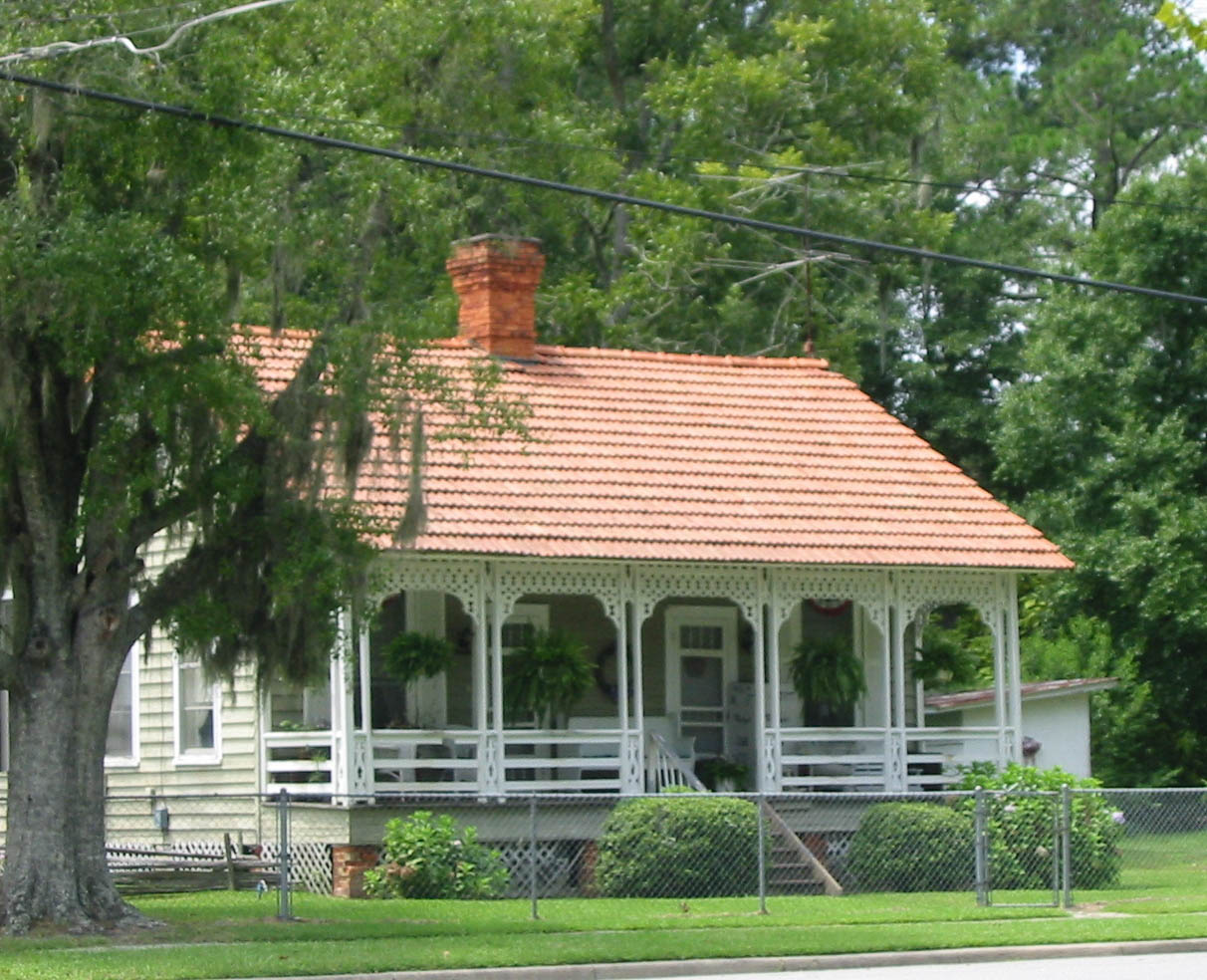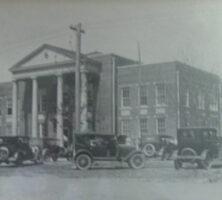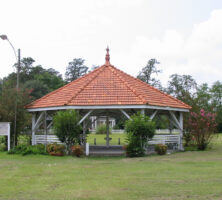The small town of Ludowici, incorporated in 1905, remains the only incorporated municipality in rural Long County, located in east Georgia. It was designated the county seat in 1920, when Long County was created from the western portion of Liberty County. Located between Hinesville and Jesup, Ludowici is accessible by U.S. highways 25, 84, and 301.
Johnston Station
Development progressed slowly in this agricultural region until the 1840s, when the Atlantic and Gulf Railroad, running from Savannah to the western sections of the state, cut through the area. Near the cotton plantation of Allen Johnston, the railroad established a stop referred to as “Four and a Half.” A railroad station was built across the tracks from Johnston’s home, and a small village known as Johnston Station developed around it. The Johnston Station area remained heavily agricultural into the twentieth century, with farms and timberlands owned primarily by the Johnston, Baggs, and Chapman families.
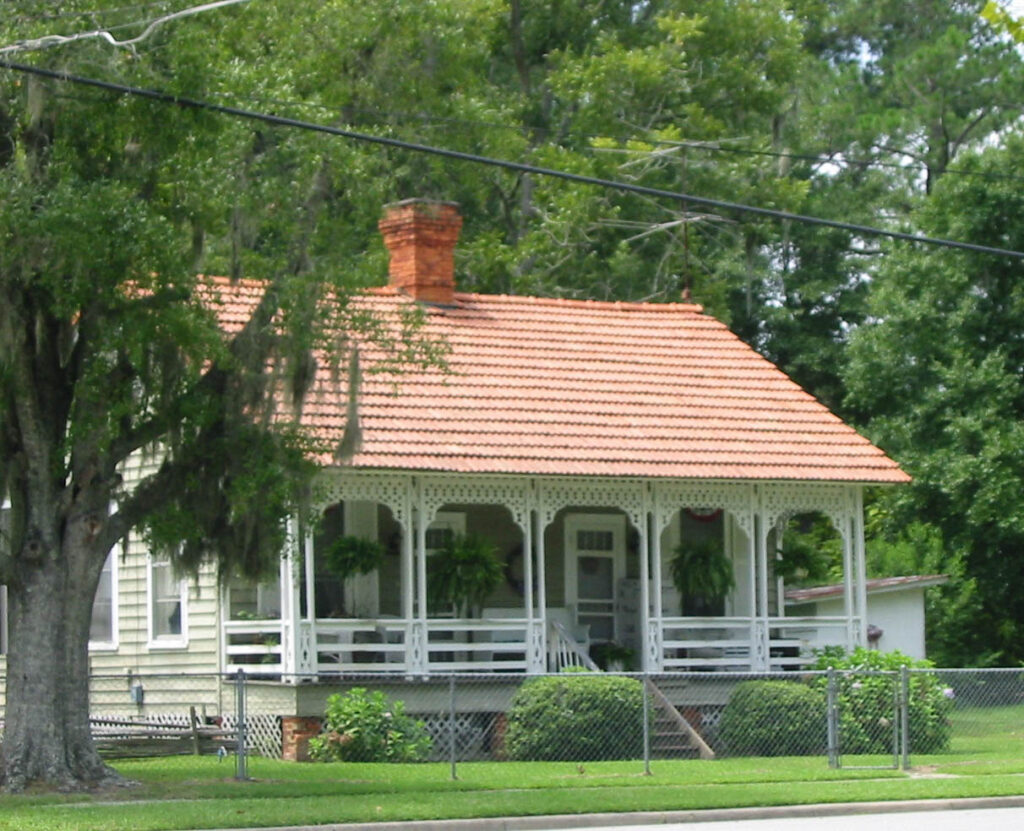
Photograph by Luciana Spracher
The Tile Industry
In the early 1900s the Ludowici-Celadon Roofing Tile Company of Chicago, Illinois, began purchasing land along Jones Creek, a tributary of the Altamaha River, on the western side of Johnston Station. Chosen for its supply of quality ceramic clay, mild winters, and transportation facilities, the land became the site of a new “Dixie” plant for the production of ceramic roofing tiles. Under the direction of German native William Ludowici, the plant covered more than 1,100 acres and was built at a cost of about $75,000. The company employed around 100 local laborers, who produced a daily average of 10,000 tiles, each stamped “Ludowici Dixie.” “Dixie” tile can still be found throughout Georgia and Florida on such prominent buildings as the U.S. Federal Building in Savannah and Flagler College in St. Augustine, Florida. In 1905, when the town erected a new high school, the Ludowici family donated $1,000 toward its construction and provided the roofing tile. In honor of the family’s generosity, the citizens renamed their town Ludowici that same year.
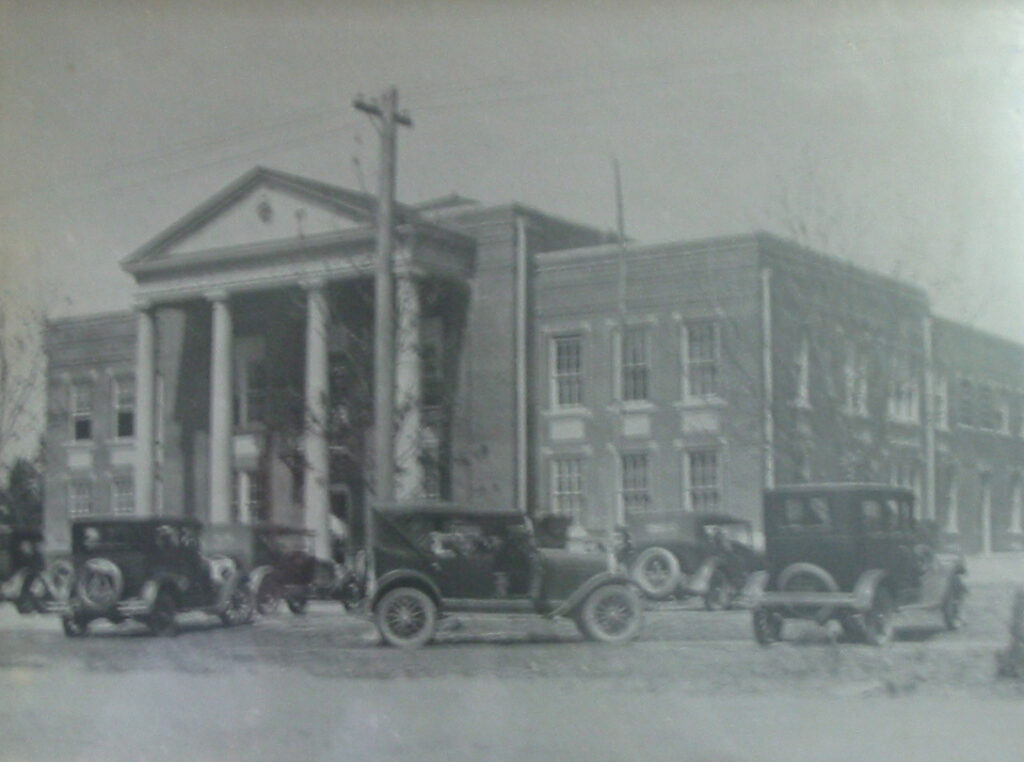
Courtesy of Debbie's Diner, Ludowici
In 1914 the tile company closed the plant in Ludowici and moved its operations to a plant in New Lexington, Ohio. The plant’s closing has been attributed to the failure of a strong market to materialize, the decline of the local clay source, and anti-German sentiment prior to World War I (1917-18). This latter argument is supported by the renaming of the town to Liberty City briefly during the war. Traces of the old plant, known as “the factory,” still exist untouched by town expansion. During the short period of the plant’s operation, the town of Ludowici saw its greatest period of growth. After its closing, the local economy declined, and the area reverted to a rural, agricultural community. The town still heavily identifies itself with the manufacture of the Ludowici tiles and is distinguished from surrounding communities by a high concentration of ceramic tile roofs on a variety of vernacular-, Queen Anne –, and bungalow-style structures. Of particular interest is Joseph Bruce Daniel’s Queen Anne house at Celadon and Gill streets, whose original roofing material was replaced with an experimental green, or celadon, glazed tile.
Points of Interest
The community enjoys two important landmarks from its Johnston Station period: Allen R. Johnston’s home (circa 1850), the oldest structure in Ludowici, and “the Depot,” the third railroad station built after the first two burned. After the railroad company discontinued use of the station, the building was deeded to the town and has since served, among other functions, as the site of the 1976 Bicentennial celebration and as the city hall during the late twentieth century. In 1905 Mary McQueen, Johnston’s daughter, donated land in the center of town for the placement of an artesian well to provide a pure water source to the community. An open, octagonal wood pavilion, covered with Ludowici tile, was erected for the public’s use and served as a town square where farmers and residents gathered to share stories, hear political candidates, and attend socials. The well flowed freely until the 1920s, when the water pressure dropped and a hand pump was installed. Today the Ludowici Well Pavilion, which is on the National Register of Historic Places, serves as a public park.

Photograph by Luciana Spracher
Modern Ludowici
Across the street from the Depot stood Ludowici’s business district, where customers frequented Branch’s Pharmacy, the Rimes Brothers Store, and the Ludowici Hotel. In December 1970 an entire block of commercial stores was devastated by fire and never rebuilt. Newer businesses are now concentrated along the highways rather than the railroad. Many local residents have found employment outside of the local community at nearby paper mills and at Fort Stewart. During the mid-twentieth century, Ludowici attracted national attention and negative publicity as a speed trap that snared tourists on their way to and from Florida. In recent years, however, the town has enjoyed increased notice as a tourist destination along the Wiregrass Trail.

Courtesy of Georgia Archives.
The Altamaha Technical College operates a satellite campus in Ludowici.
According to the 2020 U.S. census, the population of Ludowici was 1,590. The local government is led by a mayor and five-member council.





